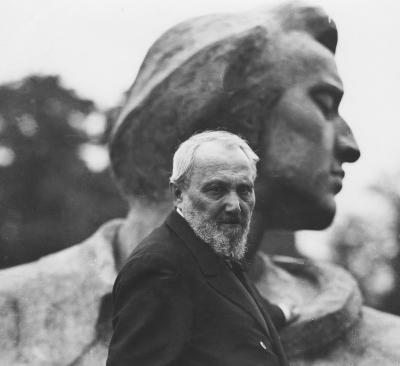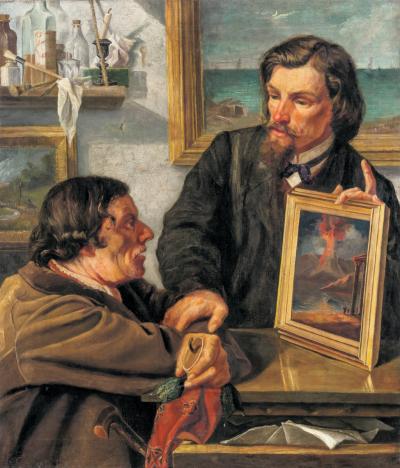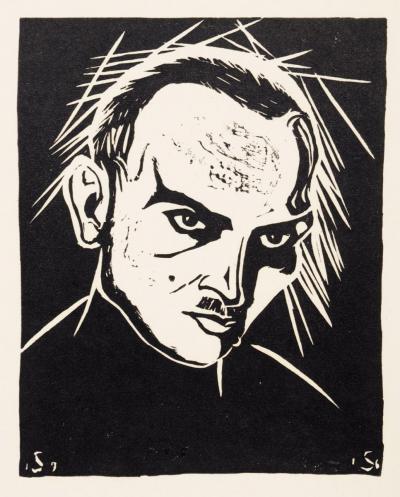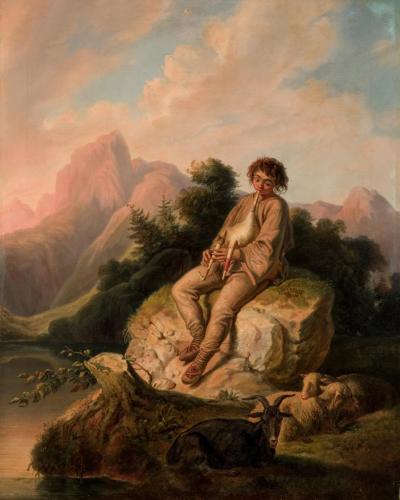Szymanowski, Wacław

Szymanowski, Wacław, Polish sculptor and painter, member of the "Munich School". From 1880-82, he studied painting at the Academy of Fine Arts in Munich. In 1888, he was awarded a gold medal in the Munich Glaspalast. From 1891-93, he managed a painting school with Stanisław Grocholski (1860-1932) in Munich-Pasing. Member of the Munich Secession. *23 August 1859 in Warsaw, †22 July 1930 ibid. Son of the author and journalist Wacław Szymanowski (1821-1886), father of the physicist, philosopher and politician Wacław Szymanowski (1895-1965). He had his first training as an artist in the Warsaw drawing class/Klasa Rysunkowa under Wojciech Gerson (1831-1901) until 1876. In 1876, he went to Paris, studied sculpture under Cyprian Godebski (1835-1909) and Eugène Delaplanche (1836-1891) and, impressed by the second Impressionist exhibition that was held in the same year, began to paint. On 11 October 1880, he joined the antiquity class at the Royal Academy of Fine Arts in Munich, studied painting under the painters Gyula Benczúr (1844-1920) and Ludwig von Löfftz (1845-1910) until 1882, which he completed with a bronze medal. In 1888, he was awarded a gold medal at the International Art Exhibition in the Munich Glaspalast for his painting "Farmers’ dispute" (Dispute between Hutsuls). In April 1891, Szymanowski and the painter Stanisław Grocholski (1860-1932, member of the "Munich School") opened a private school for painting and drawing in Grocholsiki’s home in München-Pasing, from which however, it appears that he later withdrew. He also got involved with the Munich Secession which was founded in 1892. In 1895, he moved to Paris, in 1896 to Sèvres and started sculpting again. In 1897, he was a member of the Wiener Secession. In 1905, he went to Kraków and also started painting again around 1910/11. From 1922, he lived in Warsaw. Early sculptures ("Prometheus", 1872; portrait of Teodor Axentowicz, 1882) show an academic understanding, and his first painting ("Girl in the garden", Munich 1882) shows influences from the plein air style and Impressionism. In this period, he also created genre paintings and religious scenes ("Thieves on the cross", 1883). His triptych "Prayer (Holy God)", 1892/93 veered towards Symbolism. Peasant scenes were created after travelling in the Podhale region, to Pokuttya and to the Hutsul region (1895/96). Since his Paris period, so from 1895, he had modelled his sculptures on those of Auguste Rodin (1840-1917) and Constantin Meunier (1831-1905). From 1898-1903, he created a memorial to Artur Grottger in the Planty Park in Kraków. In 1902, at an exhibition of the Vienna Secession, he showed ceramic works ("Triton I and II") and bronzes ("Laughing wave") whose decorative concept was grounded in Art Nouveau. The tomb he created for his deceased father in 1906 in the Powązkowski cemetery shows clear features of this style. In 1905, he began to draw up designs for a monumental sculpture composition made up of 52 figures entitled "Procession on the Wawel" for the courtyard of the Royal Palace in Warsaw. He became famous the world over with his design for the memorial to Frédéric Chopin in Łazienki Park in Warsaw, which was selected by an international committee (created in 1926, blown up by the Germans in 1940, reconstructed in 1958). It shows the composer sitting down leaning to the side, as if he is listening to the rustling of a meadow. The artist's works can be found in the National Museums of Warsaw, Kraków, Łódź, Poznań and Wrocław, in the District Museums of Sandomierz and Suwałki, in Płock in the Mazowieckie Museum and in Lviv in the National Painting Gallery.



